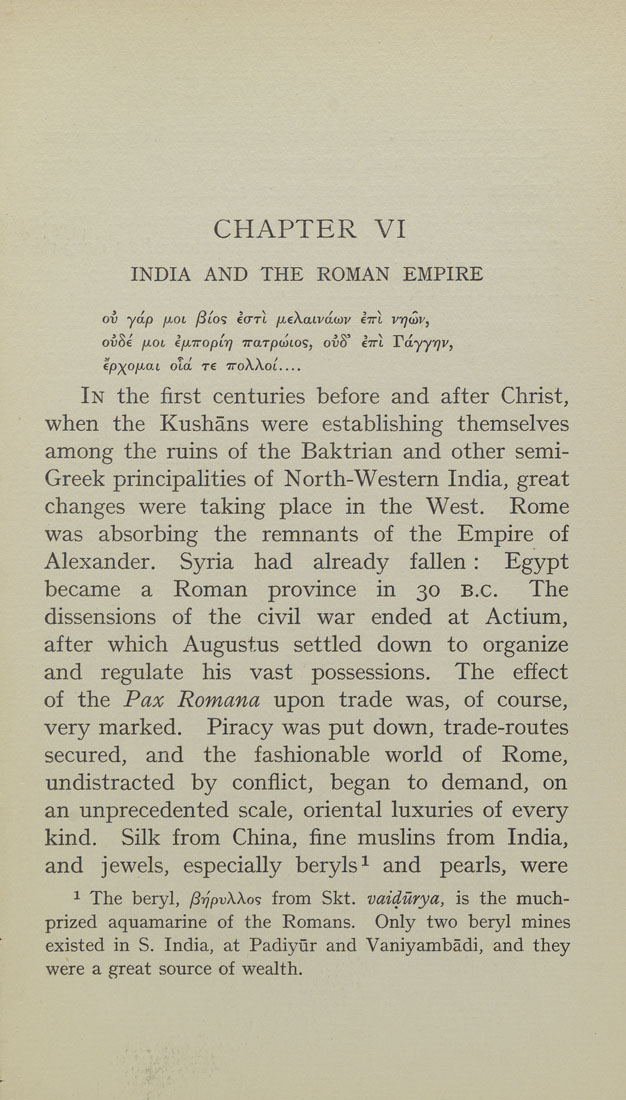CHAPTER VI
INDIA AND THE ROMAN EMPIRE
ov ydp ixoL jStos ecrrt /AeAaivawv ettI v7]U)v,
ovSi fjiOL i/XTTopir] Trarpcotos, ovS" irrl Tdyyqv,
ep-^ofjiat Ota t€ ttoXXol___
In the first centuries before and after Christ,
when the Kushans were establishing themselves
among the ruins of the Baktrian and other semi-
Greek principalities of North-Western India, great
changes were taking place in the West. Rome
was absorbing the remnants of the Empire of
Alexander. Syria had already fallen : Egypt
became a Roman province in 30 B.C. The
dissensions of the civil war ended at Actium,
after which Augustus settled down to organize
and regulate his vast possessions. The effect
of the Pax Romana upon trade was, of course,
very marked. Piracy was put down, trade-routes
secured, and the fashionable world of Rome,
undistracted by conflict, began to demand, on
an unprecedented scale, oriental luxuries of every
kind. Silk from China, fine muslins from India,
and jewels, especially beryls^ and pearls, were
1 The beryl, (37]pvXXo<; from Skt. vaidurya, is the much-
prized aquamarine of the Romans. Only two beryl mines
existed in S. India, at Padiyiir and Vaniyambadi, and they
were a great source of wealth.
|








